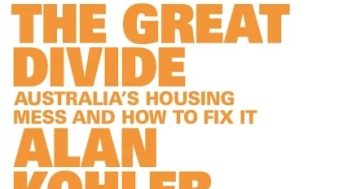David Scutt* says two economists from HSBC have made a call that Australia’s housing boom is over.

Photo: Cindy Tang
Australian house prices are falling, lending restrictions are tightening, auction clearance rates are weak and foreign interest is drying up, a scenario in complete contrast to that seen in recent years.
To Paul Bloxham and Daniel Smith, economists at HSBC Australia, the writing is now on the wall: Australia’s housing boom is over.
“Australia’s housing boom appears to, finally, be over,” the pair wrote in a note released last week.
“National housing prices have been flat over the past year, after having averaged growth of 8 per cent a year over the five years to mid-2017.”
Bloxham and Smith, as others have previously noted, say there has not been one sole factor to explain the recent moderation, but many.
“The cooling has been driven by a collection of factors including a boost to supply, particularly of apartments, a tightening of prudential settings that has progressively occurred from early 2015 until recently, and a pullback in foreign demand, partly due to stricter Chinese capital controls as well as increased local taxes and constraints on local access to credit for foreign buyers,” they say.
And having led the national price upswing previously, Bloxham and Smith say these headwinds have been felt most acutely in Australia’s largest and most expensive housing markets, Sydney and Melbourne.
“Having had housing price booms, it is now Sydney and Melbourne that are seeing their housing markets cool, while other cities have generally continued to see subdued housing market conditions,” they say.
“For Sydney, housing prices have fallen by 4 per cent since their peak in mid-2017, although they are still 66 per cent above the mid-2012 trough.”
“For Melbourne, housing prices are up 4 per cent over the past year, but this is a slowing from double-digit growth over the previous year.”
The scale of the recent downturn has surprised some analysts, including Bloxham and Smith, who admit both markets have cooled faster than what they previously anticipated.
So, a number of factors are acting to cool the housing market, with the most acute effects being felt in Sydney and Melbourne.
But what will happen in the future?
Like others, Bloxham and Smith are now predicting that Sydney prices will continue to decline in the months ahead.
“We now forecast Sydney to see outright housing price falls in 2018 of around 3–5 per cent, but we are expecting the market to stabilise somewhat in coming quarters and see a broadly flat market in 2019,” they say.
However, they feel Melbourne’s market will fare better in comparison.
“For Melbourne, we are expecting low single digit housing price growth overall in 2018 and 2019, with the market better supported than Sydney, partly due to still very strong population growth,” they say.
They expect minimal changes in Australia’s remaining mainland State capitals over the next 18 months.
So why, at a time when lending restrictions appear to be getting tighter, and potentially even more so following the conclusion of the Banking Royal Commission later this year, do Bloxham and Smith think the housing market will experience a soft landing in the coming years?
They think many of the same factors that helped to support prices in recent years — strong employment growth and low interest rates — will continue to support demand.
“Housing prices are unlikely to fall sharply given continued low interest rates and strong employment growth,” they say.
“Although household debt levels are high, any misallocation of lending does not appear to be widespread and the national housing market is not oversupplied.”
They also dismiss the view presented by other analysts that the housing slowdown will weigh on household spending, and as a consequence economic growth.
“We doubt that the slowdown will weigh heavily on the consumer,” Bloxham and Smith say.
“This is largely because households have become more cautious in their financial behaviour in the post-Global Financial Crisis period.”
“We see few signs that there has been a positive wealth effect from the recent housing price booms in Sydney and Melbourne and therefore doubt that the cooling will lead to much of a negative wealth effect.”
As for the biggest risk to their views for prices and spending, from a domestic perspective, they say household income growth will need to improve.
“The key to the outlook is whether household income growth picks up from here,” they say.
“A lift in household income would help to support ongoing servicing of mortgages and help secure financial stability.”
“A lift in household income growth would also drive further housing purchases, supporting housing price growth.”
* David Scutt is Markets and Economics Editor at Business Insider Australia in Sydney. He tweets at @Scutty.
This article first appeared at www.businessinsider.com.au.











